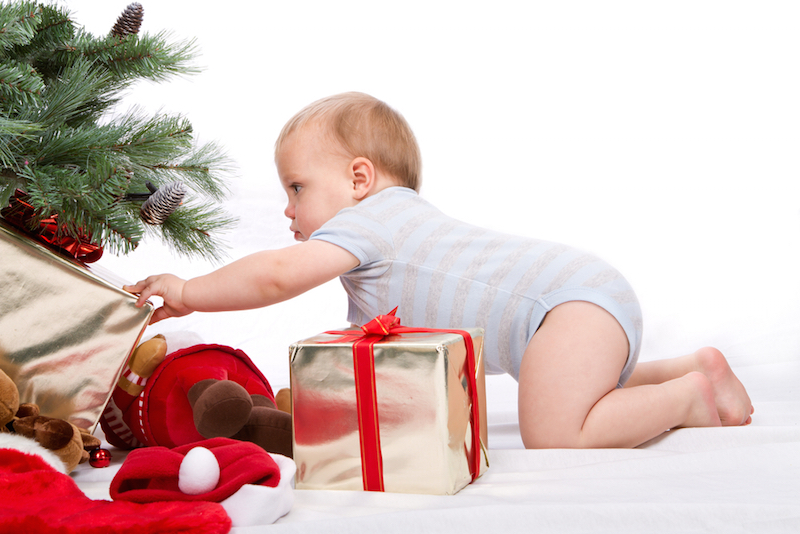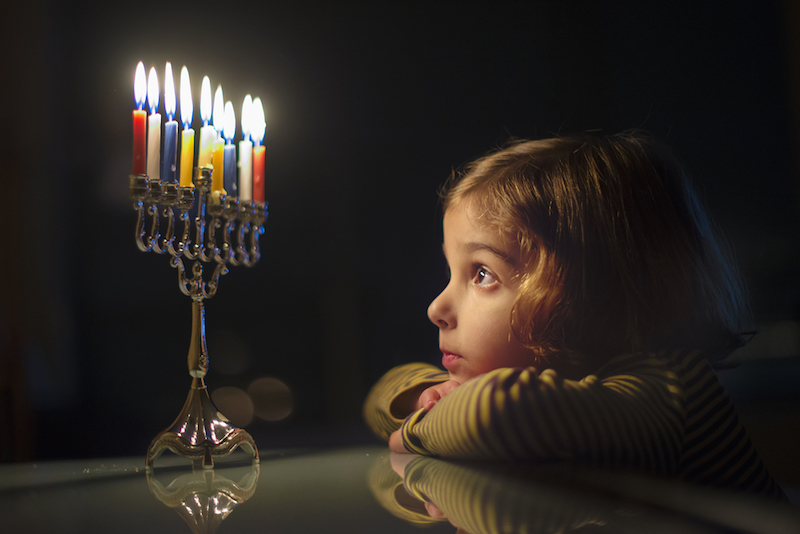Traveling for the Holidays with Kids? How to Keep Them Safe

The holiday season is a time of wonder for kids. But it can also be a recipe for meltdowns and safety disasters, as travel, jet lag and disrupted routines are combined with visits to homes that are not set up for babies and toddlers.
If you're a parent traveling with young children this year, or a host welcoming friends' or relatives' babies into your home, check out the following tips from pediatricians on how to create a safe environment and ease holiday stress.
A few simple precautions — and a little bit of patience — can go a long way toward keeping little ones safe.
Top safety tips

The biggest dangers in a non-baby-proofed house are typically everyday things, pediatricians say. Electrical wires, steep stairs and choking hazards are common dangers, said Dr. Justin Smith, a pediatrician at Cook Children's Medical Center in Fort Worth, Texas.
Medications and cleaning supplies are often left within arm's reach of little ones, added Dr. Wendy Swanson, a pediatrician at Seattle Children's Hospital who blogs at SeattleMamaDoc.
Holiday hosts can do a quick sweep of their home to fix common issues, Smith and Swanson said:
Get the world’s most fascinating discoveries delivered straight to your inbox.
- Protect against falls by blocking off stairs.
- Cover outlets with inexpensive outlet plugs.
- Get small objects out of reach. Choking is a leading cause of death among children under 3, according to the American Academy of Pediatrics (AAP). Choking hazards include small toys, balloons, magnets, coins and even pieces of dog food. Look out for snacks that are left out but might be within a young child's reach, too — nuts, popcorn and hard candy are among the holiday treats that are choking hazards.
- Make sure medications, cleaning supplies and other household toxins are out of reach. Remember that toddlers can climb and are often very curious about the contents of bags and drawers.
- Tie up any cords and garlands that are longer than 12 inches (30 centimeters), because they can be a strangulation hazard.
Asking hosts to baby-proof their homes doesn't have to be a fraught conversation, Smith told Live Science. [9 Weird Ways Kids Can Get Hurt]
"Say something like, 'Oh, man, our 2-year-old is really into everything right now, putting things in their mouth and opening doors. Is there something I can do to help you prepare?'" he said.
Holiday hazards

The holidays are a time when people bring new items into the home, and those items are often very tempting to babies and toddlers. Bright lights, shiny ornaments and other alluring items should be kept out of reach, even if that means the Christmas tree is naked on the bottom, pediatricians say. Look out for these other holiday hazards, too:
- Hot beverages: Left close to the edge of a counter or table, hot chocolate or tea can be a scalding risk. Keep hot drinks far back from the table edge.
- Holiday decorations: Many ornaments are choking hazards by themselves, or they include small parts that could fall off and become choking hazards. Garlands and strings of lights can be a strangulation risk. Keep festive items up high so they can be enjoyed without posing a hazard.
- Christmas trees: Make sure the tree is stable, and keep kids from grabbing at the branches. An oft-overlooked danger of trees is the fire risk, Swanson said. Keep Christmas trees away from heaters, and make sure tree lights are in good condition. Check live trees for freshness, and water them generously to prevent them from drying out.
- Menorahs: Lit candles are a fire risk, too. The National Fire Protection Association recommends keeping flames at least 12 inches from anything that can burn. Use a sturdy holder and never leave burning candles unattended.
- Fireplaces: A roaring fire on a cold night may be cozy, but pediatricians see a spike in cases of burns on the palms of children's hands around the holidays. The glass doors on fireplaces can singe off the skin in seconds, Swanson said. It may be safest to leave the fire unlit until babies and toddlers are in bed.
"Development is led by curiosity, but judgment always lags behind," Swanson said. And holiday gatherings can be distracting times, so one of the best ways to ensure the safety of little ones is to watch them like a hawk. If you're parenting with a spouse or partner, assign one person to keep a close eye on the child one evening, and then switch off the next, Swanson suggested. Think of it as shift work.
"There's no vacationing with young children," she said. "You take trips, but you don't really vacation." [Gift Ideas for Kids: Best Educational Toys and Games of 2015]
Preventing holiday meltdowns
The AAP has more safety guidelines on its website. But sometimes, the greatest holiday danger is not to life and limb, but to sanity. Traveling with young children can be stressful, especially when routines and sleep schedules are disrupted.
Parents can help their kids by keeping bedtime routines in place as much as possible, Swanson said. Though screens and devices can be lifesavers in cars and on airplanes, parents should avoid having their kids use these devices in the hour or two before bedtime so that their light doesn't disrupt the child's sleep cycle, she suggested.
"Sleep is a huge part of wellness," she said. If a child sleeps with a white-noise machine at home, a visit to grandma's is not the time to ditch it.
Most of all, have a little extra patience with your child around the holidays, Smith said. Disruptions in routine are hard on little ones, and it's not their fault if they become overwhelmed, he said. Parents often feel tense about their child's behavior around friends and family, worrying they'll be judged if the baby screams or the toddler has a tantrum.
"Their behavior doesn't necessarily reflect your parenting skills," Smith said, adding, "You're not there to perform."
Follow Stephanie Pappas on Twitter and Google+. Follow us @livescience, Facebook & Google+. Original article on Live Science.

Stephanie Pappas is a contributing writer for Live Science, covering topics ranging from geoscience to archaeology to the human brain and behavior. She was previously a senior writer for Live Science but is now a freelancer based in Denver, Colorado, and regularly contributes to Scientific American and The Monitor, the monthly magazine of the American Psychological Association. Stephanie received a bachelor's degree in psychology from the University of South Carolina and a graduate certificate in science communication from the University of California, Santa Cruz.
